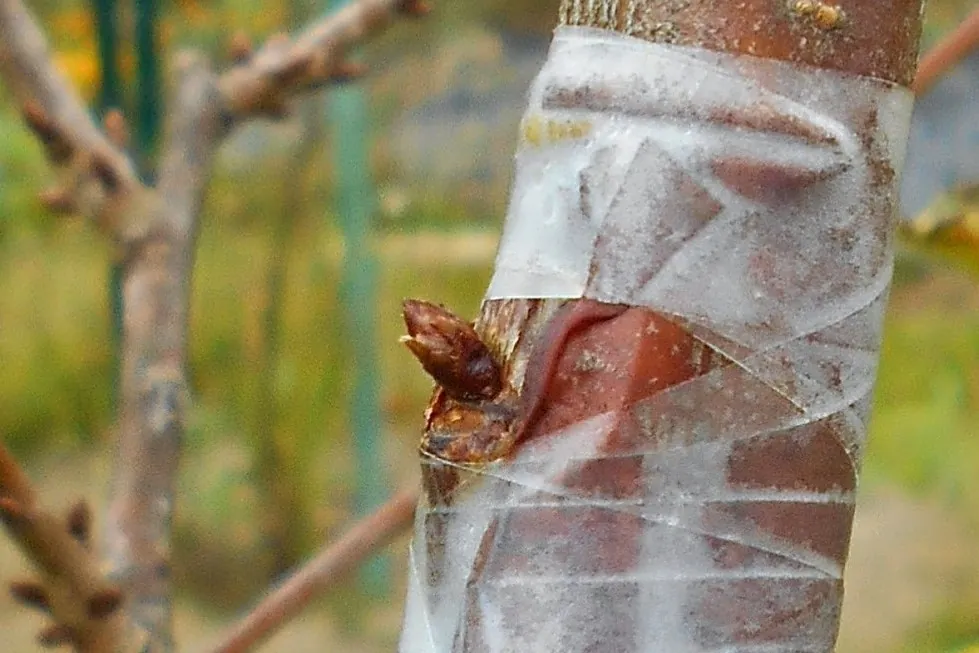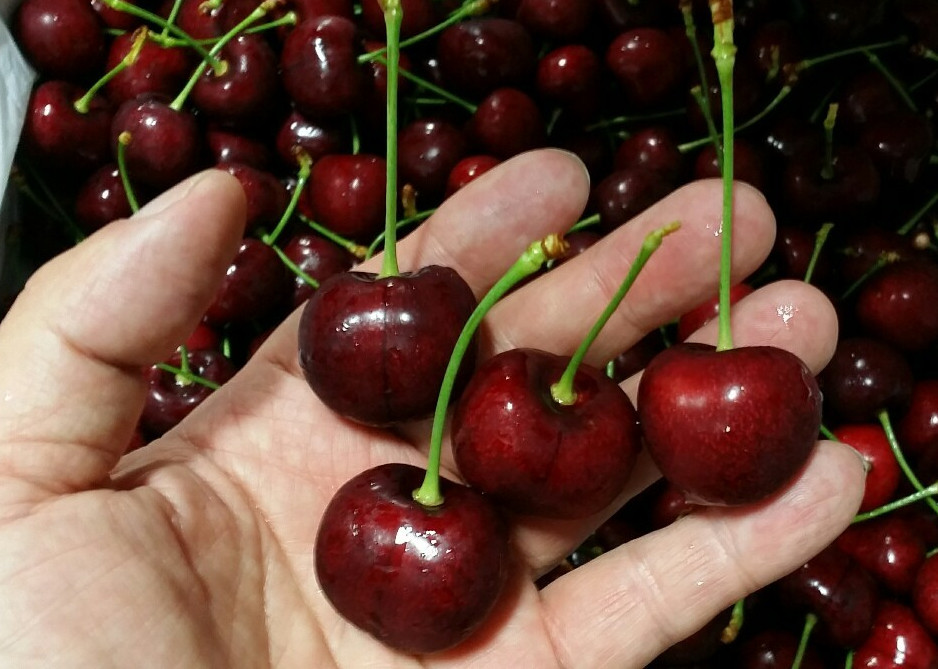The trial aims to establish a protocol of Armonigro applications on Brooks and Santina cherry trees in the inner valley of Aconcagua, Chile, in order to compensate for the chilling requirement compared to the control treated with Siberio.
For nectarines, two rescue applications were carried out to improve fruit size in the May Glo variety before harvest.
Problems and Causes
The current adverse agroclimatic conditions are compromising the productive potential of several species and varieties (cherries, nectarines, walnuts, among others) with varying levels of severity.
Main problems and causes include: Lack of chilling hours, deficit of winter precipitation, and increasing winter temperatures. All of these result in insufficient bud maturation, uneven, poor, and delayed sprouting.
The alternation of low and high temperatures during sprouting and spring flowering generates plant stress, causing bud, flower, and fruit drop.
Diagnosis
It is evident that plants are facing extreme conditions that hinder their normal development. Added to this are climatic, water, health, and management stresses, which are causing serious problems in orchards, particularly affecting growth, yield, and quality production.
The challenge, therefore, is to apply technology, research, cultural practices, and nutrition, among other tools, to strengthen the plants’ ability to respond to the stresses to which they are constantly exposed and to enhance their genetic and biological defense traits.
Hypothesis
The initial hypothesis is to establish an application protocol on Brooks and Santina cherry trees in the inner valley of Aconcagua (Chile), aiming to strengthen the plants and improve yield.
Two commercial doses of Armonigro with an adjuvant (Anngro) were used. Several measurements were carried out according to cardinal orientation and differentiation between the upper and basal parts of the plants.
Applied Products
Armonigro: Genetic biostimulant with 3,900 nano-products of natural organic matter derived from European organic soils with high concentrations of lignin and water-soluble tannins. It also includes a high content of oxygen and carbon (carboxyl, hydroxyl, phenolic, and quinone groups), thus performing excellent oxidative anti-stress activity and promoting healthier growth, yield, and quality.
Anngro: Nanoparticle-based transport vesicles that enhance product absorption, facilitate distribution, and release molecules at the intracellular level in plants.
Methodology
1. Cherries
For Brooks and Santina varieties, treatments included one or two doses of Armonigro at concentrations of 120 cc and 180 cc per hectare, plus 125 cc per hectare of Anngro as an application adjuvant.
2. Nectarines
The treatment included two applications of Armonigro at concentrations of 60 cc and 100 cc per hectare, carried out 27 and 6 days before harvest, respectively.
Counts and Measurements
1. Cherries
Counts on one-year shoots and spurs were carried out in different branch sections, including vegetative and floral buds, spurs, flowers, and fruits, throughout the vegetative cycle until pre-harvest, to identify differences between plants treated with Armonigro and control plants with Siberio.
Measurements according to cardinal points were discarded since no significant differences were detected.
2. Nectarines
In the early May Glo variety, two orchard areas were selected, and randomly chosen plants with one-year shoots were evaluated. A harvest was conducted two days prior to the orchard harvest to measure fruit weight and volume, comparing the final size effect between Armonigro treatment and untreated control.
Preliminary Results
1. Cherries
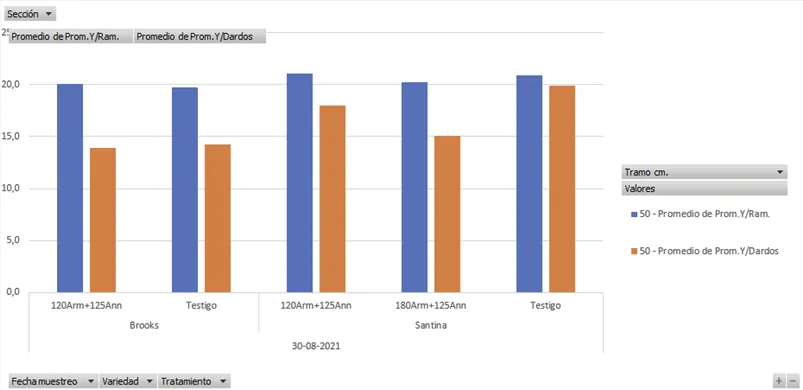 Graph 1: Average per treatment (No. of buds per shoots and spurs, in standardized 50 cm sections)
Graph 1: Average per treatment (No. of buds per shoots and spurs, in standardized 50 cm sections)
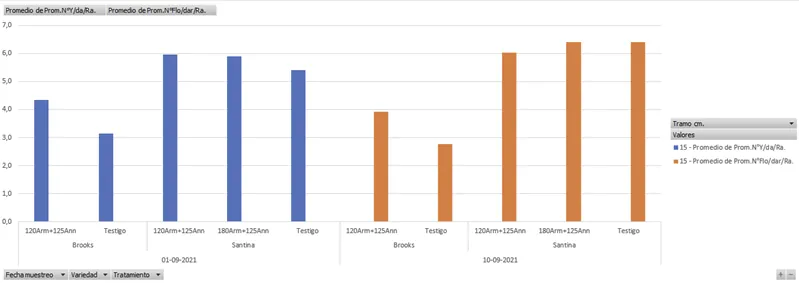 Graph 2: Average per treatment (No. of buds and flowers per spur per branch, in standardized 15 cm sections)
Graph 2: Average per treatment (No. of buds and flowers per spur per branch, in standardized 15 cm sections)
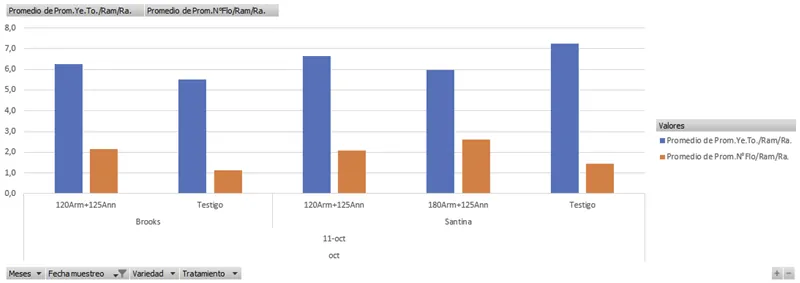 Graph 3: Average per treatment (No. of buds and flowers per branch, in the basal section)
Graph 3: Average per treatment (No. of buds and flowers per branch, in the basal section)
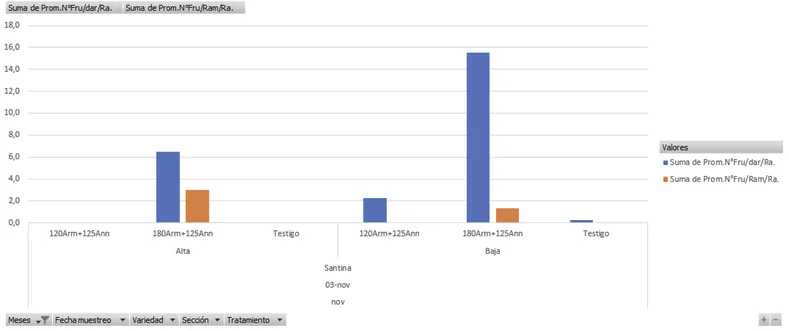 Graph 4: Average number of fruits on shoots and spurs in complete branch sections, for upper and basal sections of the plant
Graph 4: Average number of fruits on shoots and spurs in complete branch sections, for upper and basal sections of the plant
2. Nectarines
 Graph 5: May Glo nectarine harvest, 2021-2022 season, Kg/ha
Graph 5: May Glo nectarine harvest, 2021-2022 season, Kg/ha
Conclusions
1. Cherries
From the obtained data, it can be concluded that under conditions of insufficient chilling hours, the application of compensators is more effective in the basal part of the plants compared to the upper part.
Furthermore, a better fruit set was observed in shoots with spurs compared to one-year shoots.
2. Nectarines
It can be concluded that the application of Armonigro, although late and close to harvest, had a minimal but positive effect on yield (kg/ha) and slightly advanced the harvest date.
Source text and images: Agronomic
Cherry Times - All rights reserved










